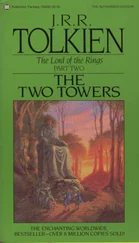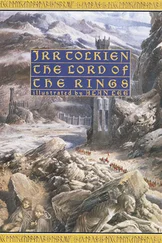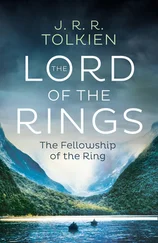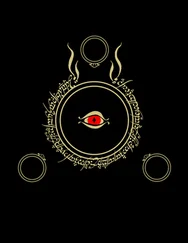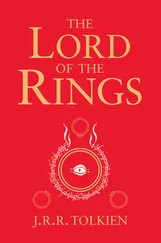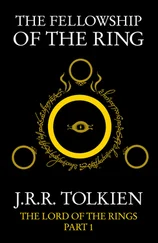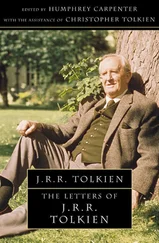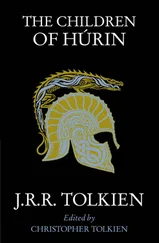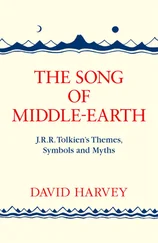It is to be borne in mind that at that time the Quenta represented (if only in a somewhat bare structure) the full extent of my father’s ‘imagined world’. It was not the history of the First Age, as it afterwards became, for there was as yet no Second Age, nor Third Age; there was no Númenor, no hobbits, and of course no Ring. The history ended with the Great Battle, in which Morgoth was finally defeated by the other Gods (the Valar), and by them ‘thrust through the Door of Timeless Night into the Void, beyond the Walls of the World’; and my father wrote at the end of the Quenta : ‘Such is the end of the tales of the days before the days in the Northern regions of the Western world.’
Thus it will seem strange indeed that the Quenta of 1930 was nonetheless the only completed text (after the ‘Sketch’) of ‘The Silmarillion’ that he ever made; but as was so often the case, external pressures governed the evolution of his work. The Quenta was followed later in the 1930s by a new version in a beautiful manuscript, bearing at last the title Quenta Silmarillion , History ofthe Silmarilli . This was, or was to be, much longer than the preceding Quenta Noldorinwa , but the conception of the work as essentially a summarising of myths and legends (themselves of an altogether different nature and scope if fully told) was by no means lost, and is again defined in the title: ‘The Quenta Silmarillion . . .. This is a history in brief drawn from many older tales; for all the matters that it contains were of old, and still are among the Eldar of the West, recounted more fully in other histories and songs.’
It seems at least probable that my father’s view of The Silmarillion did actually arise from the fact that what may be called the ‘ Quenta phase’ of the work in the 1930s began in a condensed synopsis serving a particular purpose, but then underwent expansion and refinement in successive stages until it lost the appearance of a synopsis, but nonetheless retaining, from the form of its origin, a characteristic ‘evenness’ of tone. I have written elsewhere that ‘the compendious or epitomising form and manner of The Silmarillion , with its suggestion of ages of poetry and ‘‘lore” behind it, strongly evokes a sense of “untold tales”, even in the telling of them; “distance” is never lost. There is no narrative urgency, the pressure and fear of the immediate and unknown event. We do not actually see the Silmarils as we see the Ring.’
However, the Quenta Silmarillion in this form came to an abrupt and, as it turned out, a decisive end in 1937. The Hobbit was published by George Allen and Unwin on 21 September of that year, and not long afterwards, at the invitation of the publisher, my father sent in a number of his manuscripts, which were delivered in London on 15 November 1937. Among these was the Quenta Silmarillion , so far as it then went, ending in the middle of a sentence at the foot of a page. But while it was gone he continued the narrative in draft form as far as Túrin’s flight from Doriath and his taking up the life of an outlaw:
passing the borders of the realm he gathered to himself a company of such houseless and desperate folk as could be found in those evil days lurking in the wild; and their hands were turned against all who came in their path, Elves, Men, or Orcs.
This is the forerunner of the passage, in the text in this book p. 98, at the beginning of Túrin among the Outlaws.
My father had reached these words when the Quenta Silmarillion and the other manuscripts were returned to him; and three days later, on 19 December 1937, he wrote to Allen and Unwin saying: ‘I have written the first chapter of a new story about Hobbits – “A long expected party”.’
It was at this point that the continuous and evolving tradition of The Silmarillion in the summarising, Quenta mode came to an end, brought down in full flight, at Túrin’s departure from Doriath. The further history from that point remained during the years that followed in the simple, compressed, and undeveloped form of the Quenta of 1930, frozen, as it were, while the great structures of the Second and Third Ages arose with the writing of The Lord of the Rings . But that further history was of cardinal importance in the ancient legends, for the concluding stories (deriving from the original Book of Lost Tales ) told of the disastrous history of Húrin, father of Túrin, after Morgoth released him, and of the ruin of the Elvish kingdoms of Nargothrond, Doriath, and Gondolin, of which Gimli chanted in the mines of Moria many thousands of years afterwards.
The world was fair, the mountains tall,
In Elder Days before the fall
Of mighty kings in Nargothrond
And Gondolin, who now beyond
The Western Seas have passed away. . . .
And this was to be the crown and completion of the whole: the doom of the Noldorin Elves in their long struggle against the power of Morgoth, and the parts that Húrin and Túrin played in that history; ending with the tale of Eärendil, who escaped from the burning ruin of Gondolin.
When, many years later, early in 1950, The Lord of the Rings was finished, my father turned with energy and confidence to ‘the Matter of the Elder Days’, now become ‘the First Age’; and in the years immediately following he took out many old manuscripts from where they had long lain. Turning to The Silmarillion , he covered at this time the beautiful manuscript of the Quenta Silmarillion with corrections and expansions; but that revision ceased in 1951 before he reached the story of Túrin, where the Quenta Silmarillion was abandoned in 1937 with the advent of ‘the new story about Hobbits’.
He began a revision of the Lay of Leithian (the poem in rhyming verse telling the story of Beren and Lúthien that was abandoned in 1931) that soon became almost a new poem, of much greater accomplishment; but this petered out and was ultimately abandoned. He embarked on what was to be a long saga of Beren and Lúthien in prose, closely based on the rewritten form of the Lay; but that too was abandoned. Thus his desire, shown in successive attempts, to render the first of the ‘great tales’ on the scale that he sought was never fulfilled.
At that time also he turned again at last to the ‘great tale’ of the Fall of Gondolin, still extant only in the Lost Tale from some thirty-five years before and in the few pages devoted to it in the Quenta Noldorinwa of 1930. This was to be the presentation, when he was at the height of his powers, in close narrative and in all its bearings, of the extraordinary tale that he had read to the Essay Society of his college at Oxford in 1920, and which remained throughout his life a vital element in his imagination of the Elder Days. The special link with the tale of Túrin lies in the brothers Húrin, father of Túrin, and Huor, father of Tuor. Húrin and Huor in their youth entered the Elvish city of Gondolin, hidden within a circle of high mountains, as is told in The Children of Húrin ( †); and afterwards, in the battle of Unnumbered Tears, they met again with Turgon, King of Gondolin, and he said to them ( †): ‘Not long now can Gondolin remain hidden, and being discovered it must fall.’ And Huor replied: ‘Yet if it stands only a little while, then out of your house shall come the hope of Elves and Men. This I say to you, lord, with the eyes of death: though we part here for ever, and I shall not look on your white walls again, from you and from me a new star shall arise.’
Читать дальше
Конец ознакомительного отрывка
Купить книгу

